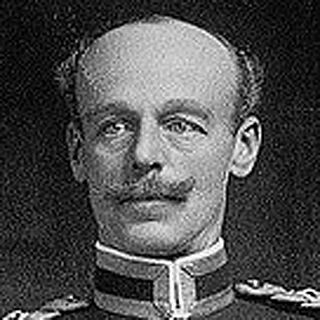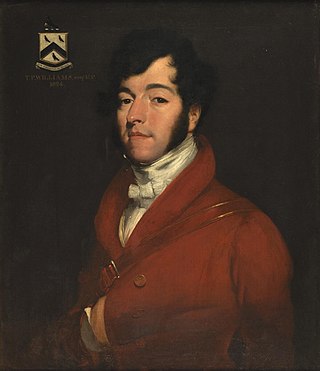Etti Plesch, born Countess Maria Anna Paula Ferdinandine von Wurmbrand-Stuppach, was an Austro-Hungarian countess, huntress, racehorse owner, and socialite. Plesch lost two of her six husbands to the same woman, Louise de Vilmorin, a French literary figure, and owned two winners of The Derby, Psidium in 1961 and Henbit in 1980.

Gloria Guinness, previously Countess Gloria von Fürstenberg-Herdringen, was a Mexican socialite and a contributing editor to Harper's Bazaar from 1963 to 1971. She was photographed by Cecil Beaton, Slim Aarons, Alejo Vidal-Quadras; designed for by Cristóbal Balenciaga, Elsa Schiaparelli, Hubert de Givenchy, Yves Saint-Laurent; and was also a close friend and inspiration to Truman Capote.
Group Captain Thomas Loel Evelyn Bulkeley Guinness, was a British Conservative politician, Member of Parliament (MP) for Bath (1931–1945), business magnate and philanthropist. Guinness also financed the purchase of the Calypso, leasing her for one symbolic franc a year to famous oceanic explorer Jacques-Yves Cousteau and his movie The Silent World (1956).

Jessie Smither, Duchess of Leinster, known by her stage name Denise Orme, was an English music hall singer, actress and musician who appeared regularly at the Alhambra and Gaiety Theatres in London in the early years of the 20th century. Married, successively, to an English baron, a Danish millionaire, and an Irish duke, she was the maternal grandmother of Aga Khan IV.

Samuel Hood, 2nd Baron Bridport, of Redlynch House in Wiltshire, of Cricket House at Cricket St Thomas in Somerset, and of 12 Wimpole Street in Westminster, was a British politician and peer.

John Reginald Lopes Yarde-Buller, 3rd Baron Churston OBE, MVO, was a British peer and soldier. He is the grandfather of Karim Aga Khan, leader of the Nizari Ismailis, an Islamic sect.

The Guinness family is an extensive Irish family known for its achievements in brewing, banking, politics, and religious ministry. The brewing branch is particularly well known among the general public for producing the dry stout beer Guinness, as founded by Arthur Guinness in 1759. An Anglo-Irish Protestant family, beginning in the late 18th century, they became a part of what is known in Ireland as the Protestant Ascendancy.

Charlotte Mary Hood, Baroness Bridport, 3rd Duchess of Bronte was an English aristocrat who inherited an Italian dukedom and estate between Bronte and Maniace in Sicily.

Thomas Wynn, 1st Baron Newborough, known as Sir Thomas Wynn, 3rd Baronet, from 1773 to 1776, was a British politician who sat in the House of Commons between 1761 and 1807.
John Seymour Berry, 2nd Viscount Camrose was a British nobleman, politician, and newspaper proprietor.

Thomas Peers Williams was a British politician, military officer and landowner who was a member of Parliament for Great Marlow from 1820 to 1868. He was Father of the House of Commons from December 1867 to 1868.
Henry Seymour Guinness was an Irish engineer, banker and politician.

Sir Richard Bulkeley Williams-Bulkeley, 10th Baronet was an English Whig and Liberal Party politician who sat in the House of Commons variously between 1831 and 1868.
Hugo Arthur Rundell Guinness is a British artist, illustrator, and writer. He is known for his illustrations in The New York Times and his bold, graphic black-and-white block prints, many of which have appeared in films and publications. He is perhaps best known for his collaborations with film director Wes Anderson.
Robert Rundell Guinness was an Irish banker, most famous for co-founding the Guinness Mahon bank in 1836.

Vivian Francis Bulkeley-Johnson was the aide-de-camp to Victor Cavendish, 9th Duke of Devonshire, the Governor General of Canada from 1916 to 1918. He served in the offices of the Imperial War Cabinet in World War I from 1918 to 1919, and in the Air Ministry from 1919 to 1922.

Serena Belinda Rosemary Hamilton-Temple-Blackwood, Marchioness of Dufferin and Ava, also known as Lindy Guinness, was a British artist, conservationist and businesswoman. She was married to the fifth Marquess from 1964 until his death in 1988.

Joan Barbara Berry, Viscountess Camrose, was an English socialite, one of the Bright Young Things.

Sir Richard Henry Williams-Bulkeley, 12th Baronet KCB VD JP was a British sailor, yachting enthusiast and public official.
Richard Francis Roger Yarde-Buller, 4th Baron Churston VRD was a British peer and a naval officer.














